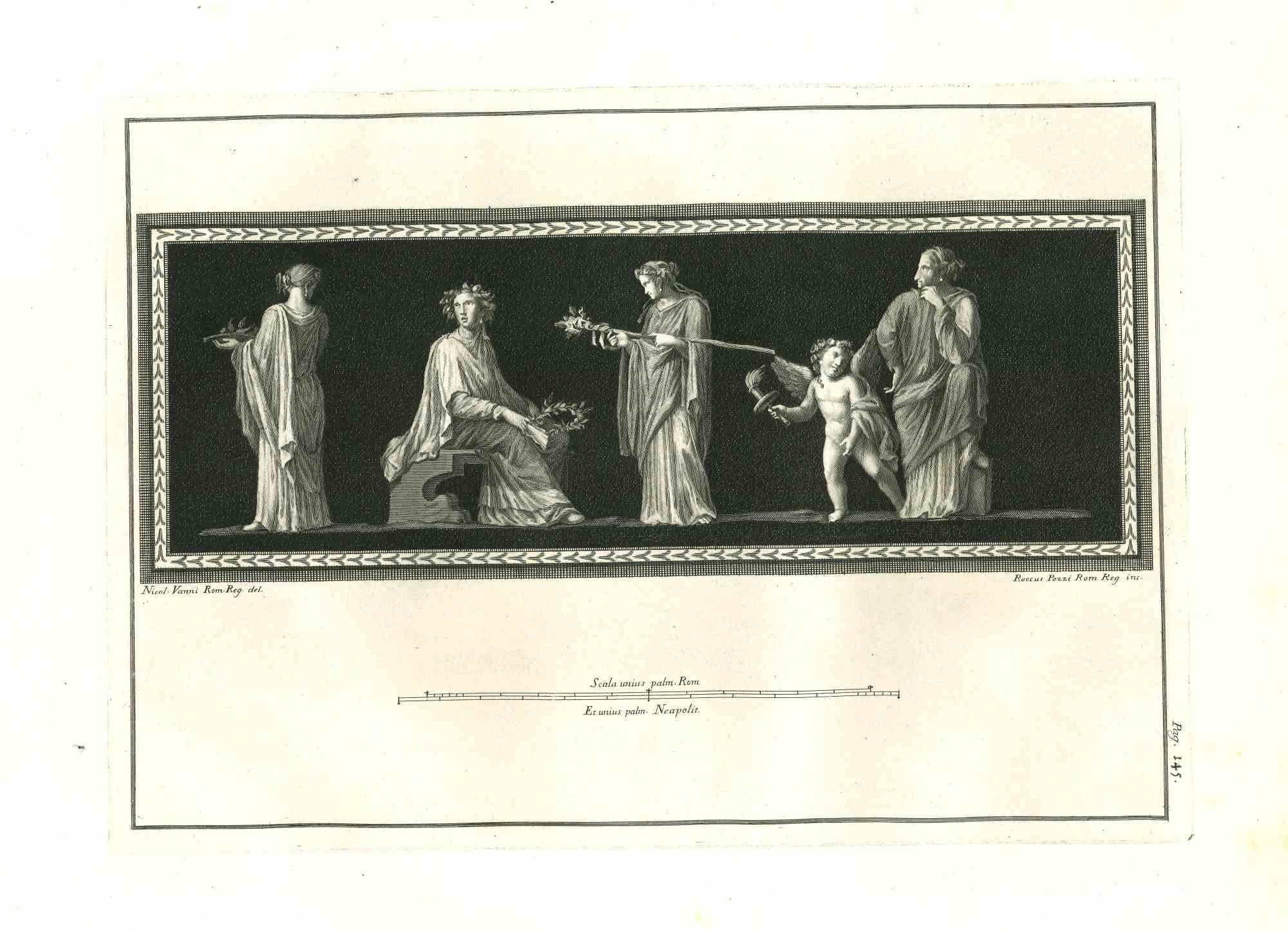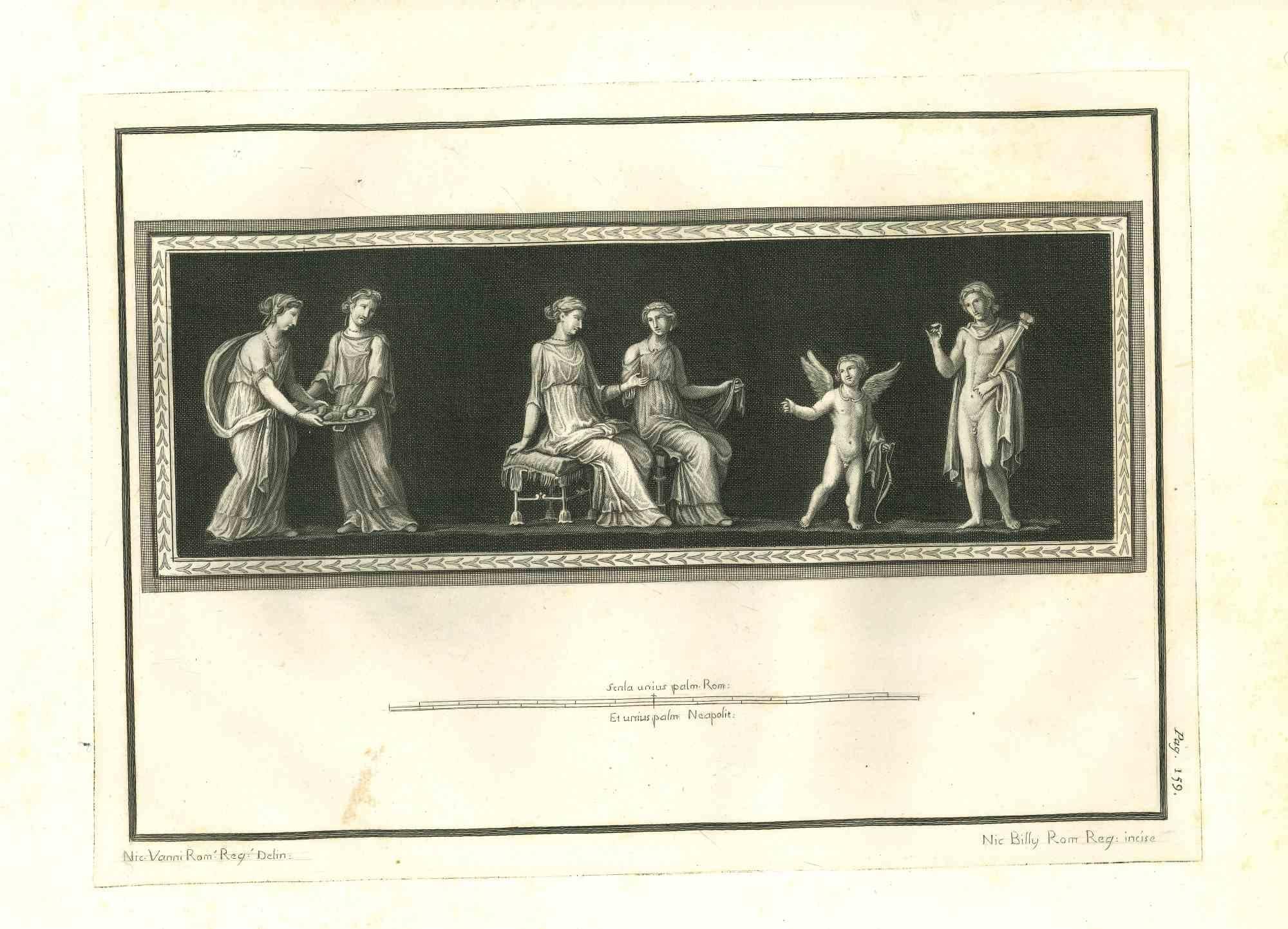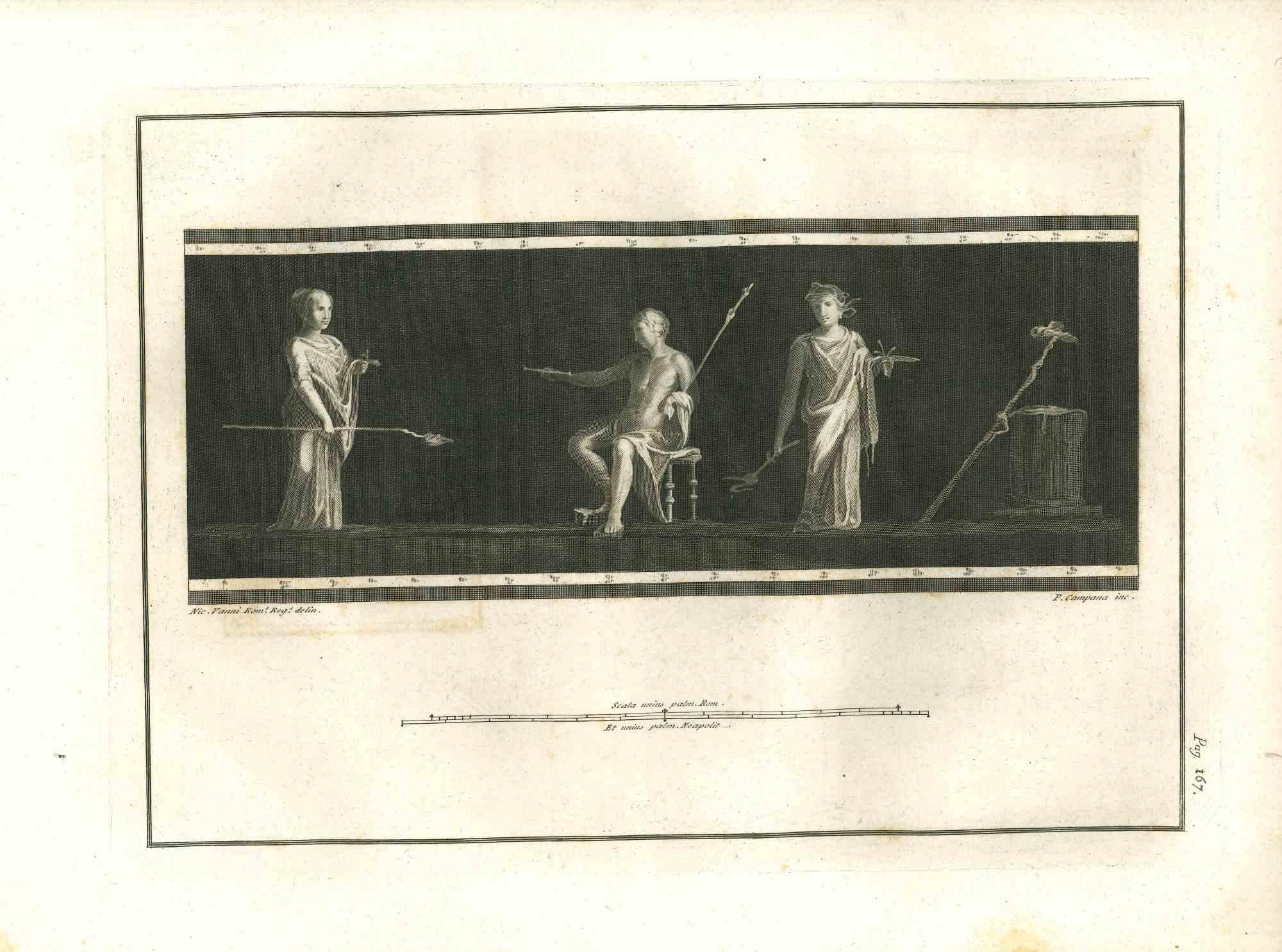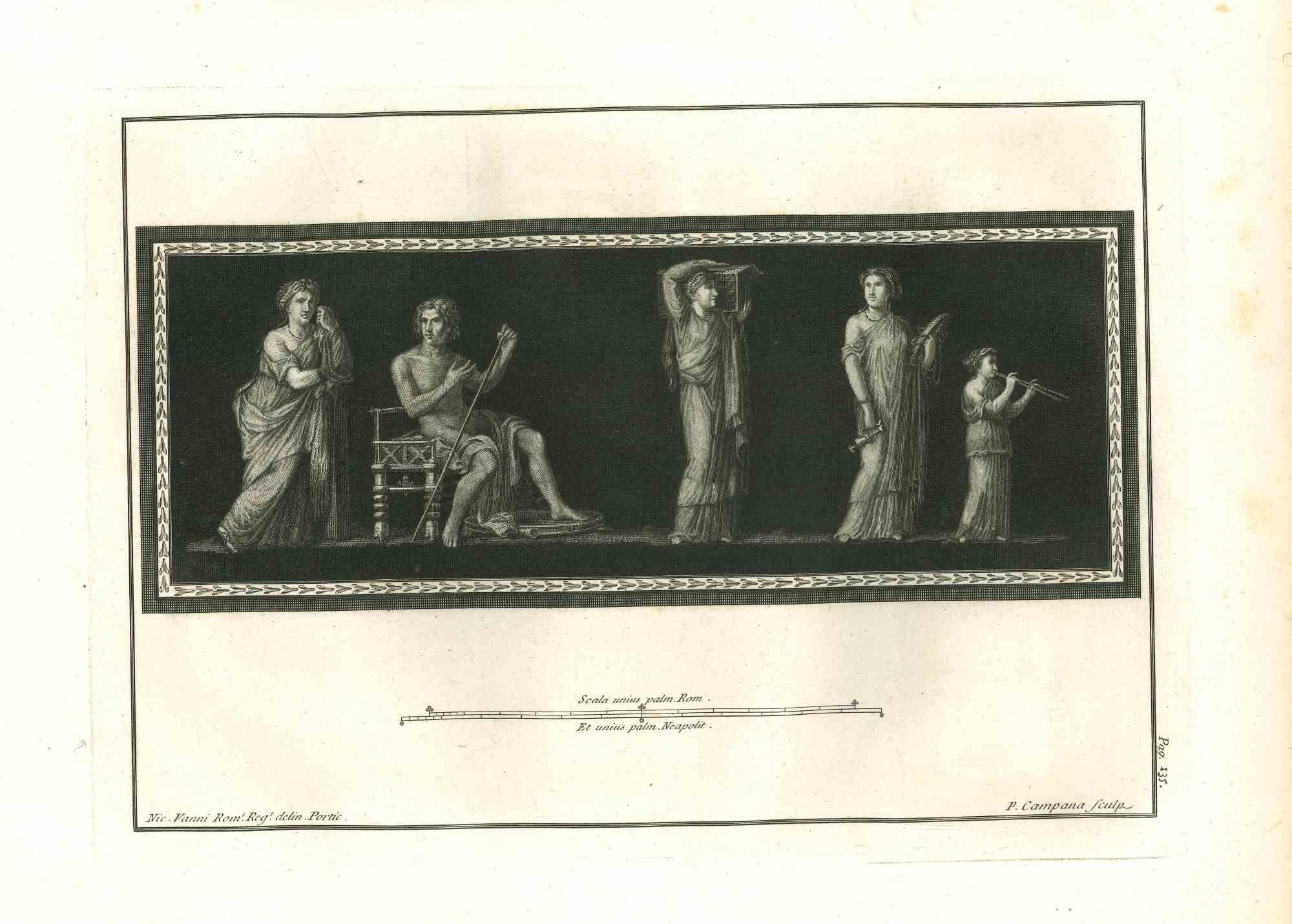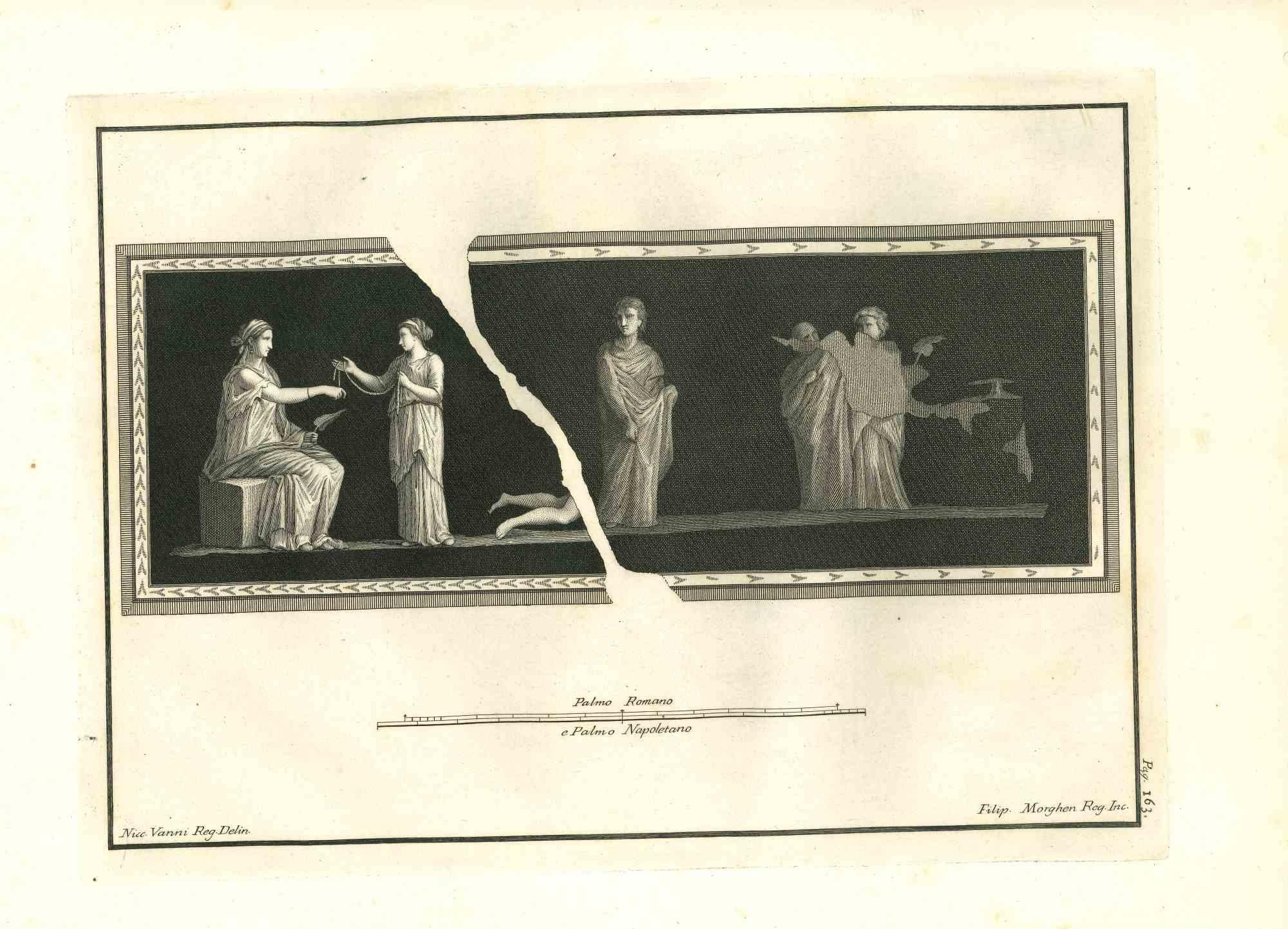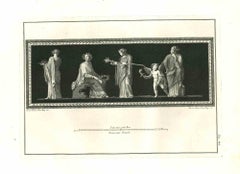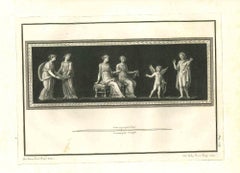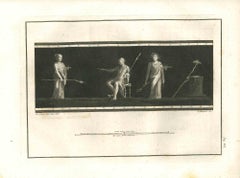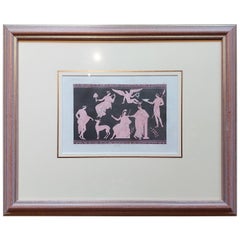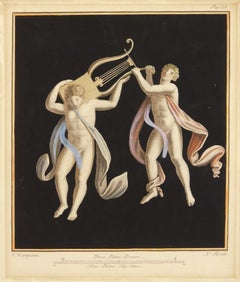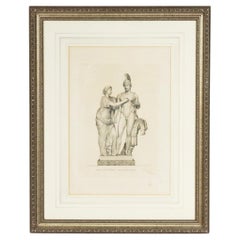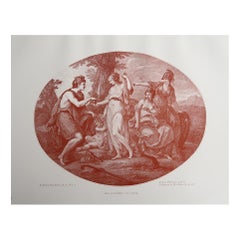Items Similar to Ancient Roman Painting - Etching by R. Pozzi, N. Vanni - 18th Century
Want more images or videos?
Request additional images or videos from the seller
1 of 5
R. Pozzi, N. VanniAncient Roman Painting - Etching by R. Pozzi, N. Vanni - 18th Century18th Century
18th Century
$497.99
$711.4230% Off
£378.47
£540.6730% Off
€420
€60030% Off
CA$698.76
CA$998.2330% Off
A$762.50
A$1,089.2930% Off
CHF 395.78
CHF 565.4130% Off
MX$9,122.70
MX$13,032.4230% Off
NOK 5,023.76
NOK 7,176.8030% Off
SEK 4,705.69
SEK 6,722.4230% Off
DKK 3,200.01
DKK 4,571.4430% Off
About the Item
Ancient Roman painting - The reverence scene with the angel from the series "Antiquities of Herculaneum", is an original etching on paper realized by Roccus Pozzi and Nicol Vanni in the 18th century.
Signed on the plate.
Good conditions except for some minor stains.
The etching belongs to the print suite “Antiquities of Herculaneum Exposed” (original title: “Le Antichità di Ercolano Esposte”), an eight-volume volume of engravings of the finds from the excavation of the ruins of Herculaneum in the Kingdom of Naples (now Campania, Italy).
It was published between 1757 and 1792 by the Regia Stamperia, and copies were delivered to selected recipients across Europe.
Despite the title, the Antiquity of Herculaneum shows objects from all the excavations undertaken by the Bourbons in the Gulf of Naples. These include Pompeii, Stabia and two sites of Herculaneum: Resina and Portici.
The Bourbon King Carlo appointed fifteen scholars creating a new “Herculaneum Academy” to study the artifacts and publish the results of the archaeological excavations of the sites.
The engravings are of high quality and the accompanying text shows a large scholarship.
They were realized by 25 prominent artists involved by the King to prepare drawings and engravings on the finds, among which we can find Giovanni Elia Morghen, Carlo Nolli, Luigi Vanvitelli and Giovanni Battista Casanova.
The “Antiquities” was designed more to amaze readers with the quality of the objects in the collection of the King of Naples than to be used in research., following and increasing the interest of 18th century society for the classical culture and Art in particular.
Through the exaltation of the classical concept of proportions and harmony, the book was of inspiration to the neoclassical movement in Europe, giving artists and decorators access to a huge shop of Hellenistic motifs.
Ref.:
National Gallery (Washington), Mark J. Millard Architectural, IV (2000), no. 1;
L. Garcia y Garcia, Nova bibliotheca pompeiana (2 v., 1998);
Royal Institute of British Architects, British Architectural Library ... Early printed books, 1 (1994), no. 112.
U. Pannuti, 'Incisori e disegnatori della Stamperia Reale di Napoli nel secolo XVIII: la pubblicazione delle Antichità di Ercolano', in Xenia antiqua, 9 (2000), p. 151-178;
V. Trombetta, 'L'edizione de Le Antichità di Ercolano esposte' in Rendiconti dell'Accademia di Archeologia, lettere e belle arti di Napoli , 59 (1984), p.151-172.
- Creator:R. Pozzi, N. Vanni
- Creation Year:18th Century
- Dimensions:Height: 12.6 in (32 cm)Width: 17.33 in (44 cm)Depth: 0.04 in (1 mm)
- Medium:
- Movement & Style:
- Period:
- Framing:Framing Options Available
- Condition:Insurance may be requested by customers as additional service, contact us for more information.
- Gallery Location:Roma, IT
- Reference Number:Seller: T-1245141stDibs: LU65038893822
About the Seller
4.9
Platinum Seller
Premium sellers with a 4.7+ rating and 24-hour response times
1stDibs seller since 2017
7,802 sales on 1stDibs
Typical response time: 1 hour
- ShippingRetrieving quote...Shipping from: Grasse, France
- Return Policy
More From This Seller
View AllAncient Roman painting - Original Etching by Philip Morghen - 18th Century
By Philip Morghen
Located in Roma, IT
Ancient Roman painting - The reverence scene from the series "Antiquities of Herculaneum", is an original etching on paper realized by Philippus...
Category
18th Century Modern Animal Prints
Materials
Etching
Ancient Roman Fresco - Original Etching by VV. AA. - 18th Century
Located in Roma, IT
Ancient Roman painting - The offering scene with the angel from the series "Antiquities of Herculaneum", is an original etching on paper realized by Nic Billy and Nic. Vanni in the 1...
Category
18th Century Modern Animal Prints
Materials
Etching
Ancient Roman Painting - Original Etching by N. Billy, N. Vanni - 18th Century
Located in Roma, IT
Ancient Roman painting - The offering scene with the angel from the series "Antiquities of Herculaneum", is an original etching on paper realize...
Category
18th Century Old Masters Animal Prints
Materials
Etching
Ancient Roman painting - Original Etching by Pietro Campana - 18th Century
Located in Roma, IT
Ancient Roman painting - The offering and reverence scene from the series "Antiquities of Herculaneum", is an original etching on paper realized by Pietro Campana...
Category
18th Century Modern Animal Prints
Materials
Etching
Ancient Roman Fresco - Original Etching by Pietro Campana - 18th Century
Located in Roma, IT
Ancient Roman Fresco, from the series "Antiquities of Herculaneum", is an original etching on paper realized by P. Campana in the 18th century.
Signed on the plate, on the lower rig...
Category
18th Century Old Masters Figurative Prints
Materials
Etching
Ancient Roman painting - Original Etching by Philip Morghen - 18th Century
By Philip Morghen
Located in Roma, IT
Ancient Roman painting - The offering scene from the series "Antiquities of Herculaneum", is an original etching on paper realized by Philippus ...
Category
18th Century Modern Animal Prints
Materials
Etching
You May Also Like
Antique Print of Greco-Roman Art by Ferrario '1827'
Located in Langweer, NL
Original antique etching/aquatint of Greco-Roman art. This print originates from ‘Il Costume Antico e Moderno (..)’ , by Giulio Ferrario, published in Milan ...
Category
Antique Mid-19th Century Prints
Materials
Paper
18th Century Hand Colored Engravings of Herculaneum Frescos by Nicola Fiorillo
Located in Rochester, NY
Set ancient Roman frescos from the series "Antiquities of Herculaneum", an original etching on paper by Nicola Fiorillo in the 18th Century. Three hand colored copper engravings of classical roman. Each print is matted in a custom made silk mat that matches the clothing. Engraving with two figures measures 21.25" x 18.25". The other two prints measure 20.5" x 16.5". Size includes mat.
# greek Pompeii Grand tour
Category
18th Century Figurative Prints
Materials
Paper
Italian Neo-Classic Engravings of Roman Themes
Located in Queens, NY
5 Italian (19th Cent) Neo-classic engravings depicting Roman statuary/mythological themes framed in silverleaf moulding with matting (PRICED EACH)
Category
Antique 19th Century Italian Neoclassical Paintings
Materials
Silver
Antique Neo-Classical Bartolozzi Print. 1907
Located in St Annes, Lancashire
Wonderful red ochre print of an 18th Century Francesco Bartolozzi engraving after Anjelica Kauffmann.
Publshed by Otto Limited, London 1907
Text...
Category
Antique Early 1900s English Neoclassical Prints
Materials
Paper
after Niccolo dell'Abbate - Lithographic Reproduction
By Niccolo dell'Abbate
Located in Collonge Bellerive, Geneve, CH
after Niccolo dell'Abbate - Lithographic Reproduction
Dimensions: 32 x 24 cm
Revue Art de France
Niccolò dell'Abate was the third of the Italian founders of the so-called school of...
Category
1960s Nude Prints
Materials
Lithograph
Antique Religion Engraving Illustrating Vatican Frescos Painted by Raphael, 1850
Located in Langweer, NL
Large antique print with two religious engravings. The upper image depicts the adoration of the Shepherds. The lower image depicts the adoration of the Magi. This print originates from a work illustrating the complete series of Vatican frescos painted...
Category
Antique 19th Century Prints
Materials
Paper
